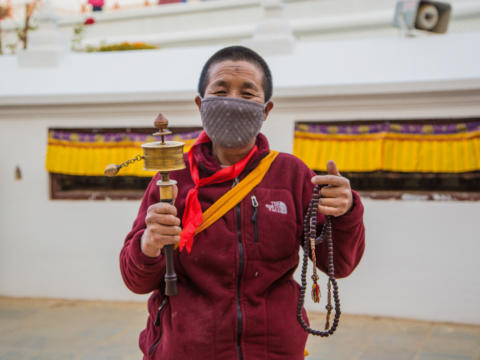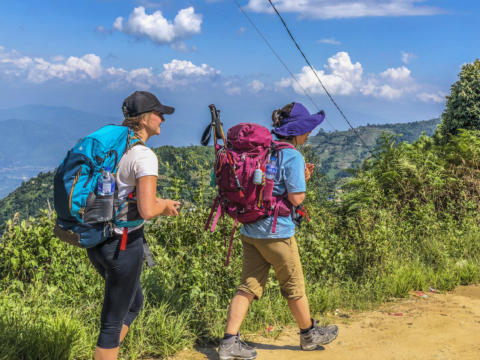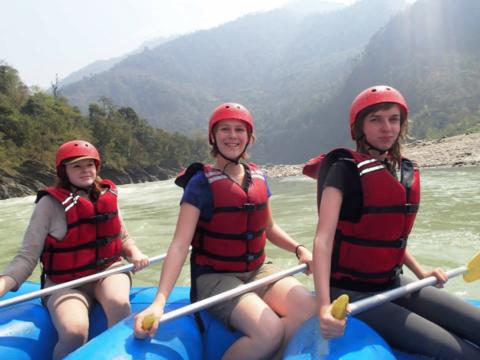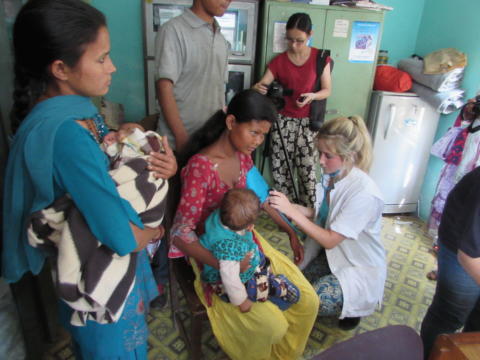Only 360€ per week!
Pokhara Construction and Renovation
Pokhara - Nepal
Be a part of a construction and renovation efforts in local schools in Pokhara.
Join us in our efforts to construct and renovate schools in the charming city in the Himalayan mountains. Help us in making better and improved learning facilities for children. Our work includes renovating, restoring, construction tasks as well as gardening and beautification of the schools.
Program Description
In this program, you will be working at local schools in Pokhara where You will be able to participate in renovation and construction activities. Our projects focus on improving the facilities in the school to make better learning environments.
Your daily work would involve indoor and outdoor construction and renovation activities including, painting, carpentry, fencing the school premises etc. You will be working outdoors as well as indoors tasks which will involve mild to hard physical work.
Aims & Objectives
To rebuild schools and create better learning environments for local students in Pokhara.
Schedule
Monday to Friday
The activities vary depending on the needs at the time. However, the main tasks are the following:
- Bringing down broken structures
- Building walls using cement, sand, stone, bricks etc
- Painting
- Basic carpentry work
- Fencing the school premises
- Preparing mixtures of cement, sand and water
- Shift rocks from one place to another
Note: This schedule can be changed and/or amended depending on weather conditions, local conditions and unforeseen circumstances.
Participant Criteria & Requirements
Standard Requirements
Minimum age: 18
Maximum age: –
Minimum English level: Basic
CRB required: On Signup
Passport copy required: On Signup
Resume copy required: No
Required qualification: None
Additional Requirements
Due to the active nature of this program, a decent level of fitness is required.
Additional Equipment
Casual dress is appropriate during your time at the project. However, no-see through clothes or low cut tops are permitted.
Location
Far from the earthquake epicenter, and almost unaffected by the disaster, Pokhara ticks all the right boxes, with spectacular scenery, adventure activities, accommodation and food choices galore. Whether you’ve returned from a three-week trek or endured a bus trip. Pokhara is the place to recharge your batteries.
The scene is a chilled-out version of Thamel, stretching along the shore of a tranquil lake with bobbing paddle boats. You can enjoy a clear view of the snow-capped mountains, just twenty or so kilometres away.
There’s much more to Pokhara than its laid-back charm. It also boasts of a booming adventure sports center; it is arguably the best paragliding venue in the world and is surrounded by white-water rivers. There's a fascinating museum dedicated to the world-famous Gurkha soldier. And last but not the least, it’s the gateway to the world-famous treks in and around the Annapurna range and beyond.
About the Accommodation
Your accommodation will be at our own center in Pokhara in the midst of a calm and peaceful neighbourhood. You will stay in shared single gender rooms with shared bathrooms. Our house is complete with living areas, dining areas and a balcony overlooking the green mountains.
Food Arrangements
The meals are Nepali food, consisting mainly of vegetarian dishes including rice and vegetables. You can expect to have a chicken dish about twice per week. You can also use the kitchen facilities to cook for yourself.
Facilities
ATMs: There are ATM's around our centers. The closest one to our residence is about a 15 minute walk from the house.
Shop: The closest local supermarket is a 30 minute walk from the centre.
Activities & Events
No scheduled activities outside the program.
Sights & Surroundings
There are plenty of things to do in Pokhara, you can go on a hike, relax by the lake, go shopping, etc.
Transportation
From this location we provide free transport to your next program at the following location(s):
- Kathmandu
Quick Facts
Name: Federal Democratic Republic of Nepal
Population: 28.98 million
Capital: Kathmandu
Language: Nepali
Currency: Nepalese rupee (NPR)
Time zone: UTC +5:45
Country Information
Namaste and welcome to Nepal, a country of high Himalayan Mountains, artistic monuments, exotic wildlife, and diverse cultures. Located between 80 12' east longitude and between 26 22' and 30 27' north latitude, Nepal extends along the south slopes of the Himalayas in central Asia.
Although Nepal is small, it has the greatest latitudinal variation of any country. The land rises from the southern plains of the Terai, barely above sea level at 70 meters, to the top of the Mt. Everest, the highest peak on Earth at 8848 meters above sea level, in a distance of less than 200 km.
Climate
Weather conditions in Nepal vary from region to region. Summer and late spring temperatures range from about 28C in the hill region of the country to more than 40C in the Terai. In the winter, the average maximum and minimum temperatures in the Terai range from a brisk 7C to mild 23C. The central valleys experience a minimum temperature often falling below the freezing point and a chilly 12C maximum. Much colder temperatures prevail at higher elevations. The Kathmandu Valley has a mild climate, ranging from 19 to 27C in the summer and 2 to 20C in the winter. In the winter, it only snows in the high elevations, around 9,000 feet. In the highest elevations, it snows year-round. The monsoon can last from mid-June to mid-August although the majority of the rain arrives in July.
Winter: From December to February, the mornings and evenings will be cold; in the daytime, you will be fine with a sweater or thin jacket.
Spring: From March to May is the best time to be in Nepal as it is neither hot nor cold. However, it does get quite windy.
Summer: June to August. Hot, humid and monsoon season.
Fall: Very pleasant and mild weather. It gets a bit windy but you will be fine with a sweater or a jacket.
Culture
Nepal's many ethnic groups are as varied as its land with their own languages and cultures. A wide variety of ethnic groups occupy the mid-hills. In the Kathmandu Valley the major population that we find is Newars, whose culture and artistry have earned them an international reputation. The Sherpas are known as tough mountain climbers. Brahmins and Chhetris are scattered over the hills and valleys, and Tamangs are found in the districts around the Kathmandu Valley. The Rais, Limbu, Gurung, Magars of the mid-hills have earned fame as Gurkha soldiers. Lowland ethnic groups such as Maithili, Bhojpuri, and Tharu enhance the colorful mosaic. The population of Nepal is about 28.98 million.
Transportation
Local Bus
One of the cheapest ways to get around Nepal. However, you get what you pay for! They are often crowded (and not just with people, sometimes even goats!). Most buses don’t depart until they get filled up, so it is not a good idea for those who have a tight schedule.
Tourist Bus
These are slightly more expensive than local buses but also more comfortable. Greenline buses offer routers between Kathmandu, Chitwan, Lumbini and Pokhara. It is recommended to book in advance to make sure you get a seat.
Taxis
Taxis are either private taxis as in any other cities or “10 Rupee” taxis, which are public. This means they don’t leave a place until they are full. The name, “10 Rupee taxis” does not mean they cost 10 Rupee! Do feel free to bargain





